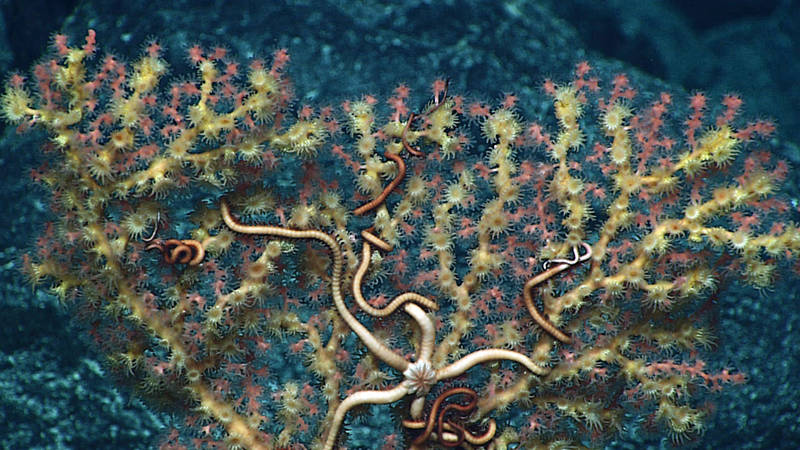Dive 03: St. Rogatien Rift
Today's dive was located on the east side of a large rift zone ridge north of St. Rogatien Bank with the objective of surveying a completely unexplored area, testing the hypothesis that high-density communities of corals and sponges can be found on ridge topography. The dive started on a relatively flat terrace surface close to a steep slope at 2,151 meters. The surface was covered by a dense aggregation of manganese nodules (two to five centimeters in diameter) that lay loosely on the bottom. Several unbranched corals, sponges, and a stalked crinoid were observed at the landing site and there was no current. A field of manganese crusted boulders was observed upon moving up the slope, which was void of animals. Further up the slope at around 2,100 meters, the density of animals increased somewhat and included corals, sponges, and crinoids. The density of animals remained moderately low until a depth of 2,050 meters, when an increase of corals and sponges was observed. As the ROV moved up the slope, both the density and diversity of animals increased with decreasing depth and distance to the ridge crest, with numerous species of gorgonians, black corals, and sponges being recorded. The ROV was not able to reach the target end point on the top of the ridge at 1,900 meters and had to leave the bottom at 1,958 meters. Only a handful of fishes were observed during the dive.
